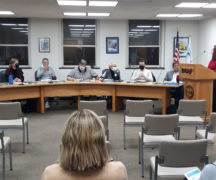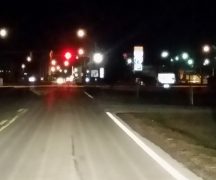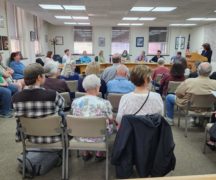By JAN LARSON McLAUGHLIN
BG Independent News
As Bowling Green focuses on making the community more walkable, the city’s Sidewalk Commission has asked that more American Rescue Plan Act funds be directed toward sidewalks.
During a City Council Finance Committee meeting Monday evening, Bill Herald reported that the sidewalk commission recommended that $150,000 in the COVID relief funds be used for sidewalk repair on construction.
“We have more need than money,” Herald said.
“It would help the community as a whole,” he said, noting the number of existing sidewalks in poor condition.
“I’m certainly interested in investing in sidewalks,” council member Greg Robinette said, adding that he would also be interested in property owners picking up half of the expenses.
Council President Mark Hollenbaugh said he would like to see the money go toward putting in sidewalks where none exist.
“For a long time we haven’t allocated putting money into sidewalks where they’ve never been,” Hollenbaugh said, mentioning Frazee Avenue as an area absent of sidewalks.
Making Bowling Green more “walkable” is a goal of the city’s proposed zoning code update. But the amenity most likely to encourage walkability – sidewalks – remain nonexistent in large swaths of the city.
Neighborhoods in the Belleville, Village and Westgate areas, plus the outer reaches of Conneaut Avenue and Sandridge Road are lacking sidewalks.
In some areas, paved sidewalks just end, with no connection to other walkways.
The existence of sidewalks in BG hinges on when subdivisions were built. In the late 1970s, Bowling Green started requiring sidewalks in residential areas, Public Services Director Joe Fawcett explained last year.
“It really boils down to the subdivision regulations,” Fawcett said. “Any new construction after that point (late 1970s) has sidewalks. Anything before that was up to the developer.”
Some neighborhoods have sidewalks that stop and start, depending on the year the homes were built. Streets like Flanders, Lorraine and Normandy reflect a “transition period,” with sidewalks dropping off in front of older homes, Fawcett said.
The Westgate neighborhood does not have sidewalks, but was constructed with wider streets to make it safer for pedestrians.
The sidewalk shortages are spread throughout the city.
“There are sections of sidewalks on the east side that go nowhere,” Fawcett said.
But the city’s resources for sidewalks aren’t enough to repair all the broken pavements, plus pour new walkways in those areas that lack sidewalks all together or have gaps between some homes.
Usually, it’s the repairs that win out for funding.
“It’s a balancing act,” Fawcett said. “There are some deteriorating sidewalks in the city that need to be addressed.”
And fixing existing sidewalks is much easier than paving new ones. Putting sidewalks in established neighborhoods means encountering trees, flowerbeds and mailboxes. Though the city can use flexi-pave surfaces around trees, homeowners aren’t always excited about sidewalks taking up space in their front yards.
“Sidewalks being built with a structure are ideal,” rather than making room for them later, Fawcett said.
The Bowling Green Sidewalk Commission makes recommendations of which sidewalks need replaced or built. In the past, the city received Community Development Block Grants for sidewalk repairs and installations.
But much of that grant money dried up, so now the city uses a 50/50 program which splits the costs of sidewalk repairs evenly between the landowner and the city. Sidewalks are the responsibility of residents, but the city has stepped up to share the costs.
In addition to looking at which sidewalks have the greatest need of repair, the commission looks at which areas of the city without sidewalks could benefit from them. But three areas on the list in 2021 are still waiting, including sidewalks extending west on Conneaut Avenue from Wintergarden to Mitchell Road, along Wintergarden Road between Conneaut and Poe Road, and along Lafayette Avenue between Conneaut and Poe Road.
The city has made progress on multi-use paths that extend to the edges of the city. One pathway will connect the Cogan’s Crossing development to the community center and the high school/middle school campus. Another will link Crim Elementary with Carter Park, and another will be a 10-foot shared use path planned on the west side of South Main Street, from Napoleon Road to Gypsy Lane Road.





